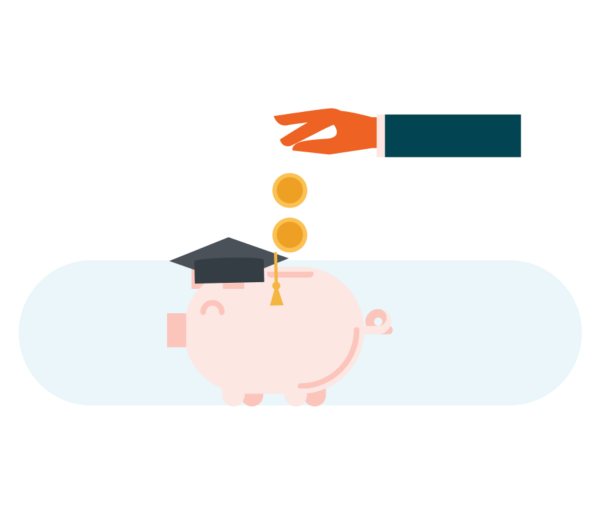Our goal is to give you the tools and confidence you need to improve your finances. Although we receive compensation from our partner lenders, whom we will always identify, all opinions are our own. Credible Operations, Inc. NMLS # 1681276, is referred to here as "Credible."
Amortization is the process of paying off a loan — such as a student loan — in equal installments. While your payments for an amortized loan will stay the same throughout the life of the loan, you’ll typically pay more interest than principal in the early years of your loan.
Because of this, you might not see much change in your overall student loan balance to begin with, especially if your payments aren’t enough to cover your monthly interest charges. The good news is some payoff strategies could help you tackle your student loans more easily while managing the impact of amortization.
Here’s what you should know about student loan amortization:
- What is amortization?
- Are your student loans amortized?
- What is negative amortization?
- Other repayment methods and amortization
What is amortization?
Amortization is the process used to pay off an installment loan. With an installment loan, you’ll make equal payments over a period of time.
How much of your payments will go toward principal and interest will shift throughout the life of the loan according to the amortization schedule.
Are your student loans amortized?
Yes, student loans are a type of installment loan, which means they’re amortized. Because of amortization, you’ll likely start off paying more in interest in the early stages of repayment.
However, if your payments aren’t enough to fully cover your monthly interest, you could end with ballooning interest costs. This is why many student loan borrowers have found themselves with student loan balances that far exceed what they originally borrowed.
Find out your loan score
If you’re wondering how competitive your loan is, the loan score tool below can help. Just enter your APR, credit score, monthly payment, and remaining balance (estimates are fine) to see how your loan stacks up.
Learn More: Student Loan Interest Calculator: Estimate Payments
What is negative amortization?
Unlike with mortgages and other amortized loans, federal student loan repayment options, such as income-driven repayment (IDR) plans, could reduce your monthly payments.
However, while signing up for one of these plans can make your payments more affordable, it could also lead to negative amortization if your payments don’t fully cover your interest charges each month. Negative amortization is when your loan amount actually increases because of unpaid interest being added to your principal balance.
Just be sure to pay only what you can reasonably afford according to your budget. Also check with your loan servicer before making extra payments to make sure the additional funds are put toward your interest.
Check Out: Private Student Loan Repayment Options
Other repayment methods and amortization
The higher your principal balance is, the greater the percentage of your monthly payments that will go toward interest. And if you’re able to reduce your monthly payments, the more likely it is that you’ll end up with a negatively amortizing student loan and a higher principal balance.
If you’re struggling with negative amortization on your student loans, a couple of options to consider include:
- Student loan refinancing: Through refinancing, your old loans will be paid off with a new private student loan — leaving you with just one loan and payment to manage. Depending on your credit, student loan refinancing might get you a lower interest rate, which would reduce the amount you owe in interest each month. This could also potentially help you pay off your loans faster.
- Federal loan forgiveness: Several loan forgiveness programs are available to federal student loan borrowers. For example, if you work for a government or nonprofit organization and make qualifying payments for 10 years, you might qualify for Public Service Loan Forgiveness. Or if you sign up for an IDR plan, you could have any remaining balance forgiven after 20 or 25 years, depending on the plan.
If you decide to refinance your student loans, be sure to consider as many lenders as possible to find the right loan for your needs. Credible makes this easy — you can compare your prequalified rates from multiple lenders in two minutes.
See Your Refinancing Options
Credible is 100% free!
